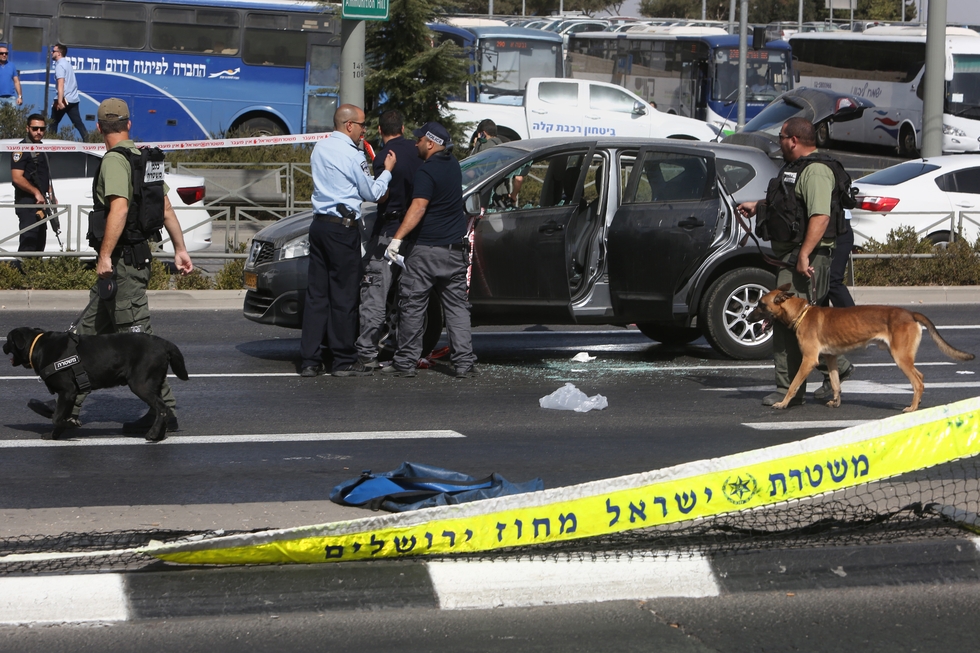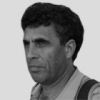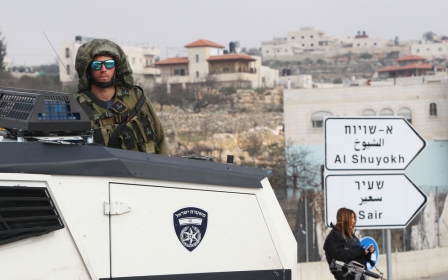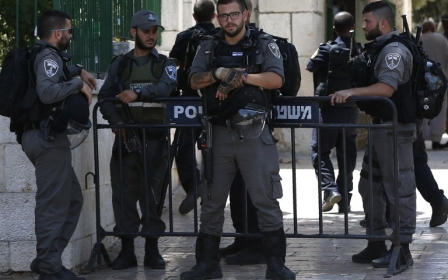'Israelisation' of Jerusalem is a project gone wrong. The latest attack proves it

Haim Bar Lev Avenue, the multi-lane road better known as "Road No 1", connects Jerusalem's Old City to its northern neighbourhoods. It runs almost parallel to the pre-1967 border, before Israel occupied and annexed the Palestinian parts of the city then under Jordanian control.
The very symbols of the efforts to unify and "Israelise" Jerusalem have become the spots of violence and death
Built 20 years ago, it was part of the efforts to integrate central Jerusalem with new Jewish neighbourhoods built over the old Green Line with the purpose of encircling of Palestinian neighbourhoods of northern Jerusalem and solidifying the idea of Greater Jerusalem under eternal Jewish-Israeli rule.
The light rail, built a decade ago, was conceived as another effort to "unify" Jerusalem, connecting these huge annexed neighbourhoods in which some 100,000 Israelis live, to heart of the city, passing through the densely populated Palestinian quarters. The route of the light trail runs along Road No 1, combining the old "unifying" efforts with the new ones.
Project gone wrong
Interestingly enough, Misbah Abu Sbeih, an Islamist activist from East Jerusalem's Silwan neighborhood, began his armed attack on Sunday at a light-rail station situated on Road No 1, killing a 60 -year-old Jewish woman and, later, an Israeli police officer.
It was not the first time that both the light rail and Road No 1 were the target of Palestinian attacks. After the brutal killing of the young Muhammed Abu Khdeir by Jewish extremists two years ago, the Palestinian quarters of northern Jerusalem exploded with anger.
Many of the violent acts in the current Palestinian haba (outburst in Arabic) or the Knives' Intifada, which began exactly a year ago in Jerusalem, took place in various points along Road No 1. The very symbols of the efforts to unify and "Israelise" Jerusalem have become the spots of violence and death.
Despite its ambition to depict Jerusalem, with its annexed parts, as a unified city, for many years Israel neglected East Jerusalem, maybe out of hope that its residents will prefer to immigrate, thus strengthening Israel's grip on these areas. It was very evident in the restrictions on Palestinian building in the city. At least one third of housing units in East Jerusalem were built without permits.
Although representing some 40 percent of the city's 830,000 population, the Palestinians quarters received only 10 percent of the municipal budgets, sometimes even less, resulting in the highest level of poverty rates in Israel, a staggering 75.3 percent under the poverty line in East Jerusalem.
The current mayor, Nir Barkat, elected eight years ago, allegedly tried to change this reality. Barkat, a staunch opponent for any political concessions to the Palestinians in Jerusalem, claimed that only through improving living conditions in the Palestinian neighbourhoods could Israel assert its indisputable sovereignty over the city.
Investments in East Jerusalem did grow in Barkat's time in office, and the Israeli press was full of reports about the "Israelisation" process through which many Jerusalemite Palestinians were educated and then employed.
A survey conducted by the Washington Institute in 2011 - which found that 40 percent of Jerusalemite Palestinians would prefer to have Israeli citizenship rather than Palestinian - was seen as proof that this "Israelisation" process was on the way. A recent poll gave even a higher figure of 52 percent who would opt to be Israelis if Jerusalem was divided between Israel and a future Palestinian state.
Unstable Jerusalem
Yet whether the polls were right or wrong, it is quite evident that this supposed "Israelisation" process was very limited. As Aviv Tartasky, a researcher for Ir Amim human right organisation in Jerusalem showed, Israeli authorities were not really ready to "pay the price" for a true and meaningful involvement of Palestinians in the urban life of Jerusalem.
Any attempt by Palestinians to demand equal rights, even through tacitly legitimatising Israeli sovereignty in this contested city, was brushed off or even crushed.
Despite this alleged "Israelisation" process, or maybe because of it, Jerusalem is the most unstable place of all the Palestinian areas. In July 2014, Shu'afat and other quartets in northern Jerusalem started their own mini-Intifada after the killing of the young Abu Khdeir.
In October 2015, a stabbing incident in the Old City was the opening sign for the "Knives' Intifada" which continues till now, with ups and downs. The very place which Israel wanted to "Israelise" turned out to the birthplace of this current wave of violence.
This still came as a surprise to Israeli authorities. Only a month ago, Barkat boasted to Likud activists that Israel had managed to regain calm in East Jerusalem thanks to its "stick and carrot" policy, referring to the closure and other collective punishments set on Palestinian neighbourhoods after the first wave of stabbings.
"The bad residents now understand… that it is not sympathetic to be on the evil side," he was quoted in Haaretz.
His deputy, Meir Turgeman, who is also head of the local construction committee, was even more outspoken. "We always lived with the false hope that if we will help these people (the Palestinians), they will change their animal-like behaviour," said Turgeman after Sunday's killings, "yet it turns out that nothing helps."
In response to the attack, Turgeman also announced that he will stop all housing permits to Palestinians.
Dreams deferred
Ohad Hemo, correspondent for Israel's Channel Two, claimed that the rise of Hamas and other Islamic organisations in Jerusalem is, to a great extent, of Israel's making. According to Hemo, the fact that Israel pushed the Palestinian Authority out of East Jerusalem, a process which began with the closure of the Orient House in 2001, created a vacuum into which Hamas entered.
Abu Sbieh, the attacker from Sunday, was active in various Islamic organisations. He was known throughout East Jerusalem as the Lion of Al-Aqsa, because of his participation in various incidents involving Israeli policemen and Jewish right-wing activists in and around what Muslims call Haram a-Sharif and what Jews call Temple Mount.
Being identified as a defender of Al-Aqsa against Israeli attempts to change the status of the site holy to both - certainly the most sensitive issue among Palestinians in Jerusalem and elsewhere - explains the widespread support that Abu Sbieh's act received in East Jerusalem. If there was uneasiness among the Palestinian public regarding the involvement in stabbing incidents of very young Palestinians, sometimes even children of 12 years old, it was not the case with Abu Sbieh.
At 39-years-old, Abu Sbieh is far from the average profile of the Palestinians who have taken part in the attacks, real or presumed, on Israeli security forces or civilians. The fact that he used a regular automatic F16 rifle may indicate that this is not just another unplanned, spontaneous attack. It is one that has more resemblance to the Second Intifada than to what we have seen in the last year.
It is too early to say whether Sunday's incident will indeed mark a turning point into a more violent confrontation between Israelis and Palestinians. Rumours about his real motives still linger.
But yet again Jerusalem has proved that under the current Israeli policy, it has more of a chance to become a theatre of violence, threatening to spread to other Palestinian territories, than to be a laboratory of forced "Israelisation".
- Meron Rapoport is an Israeli journalist and writer, winner of the Napoli International Prize for Journalism for an inquiry about the stealing of olive trees from their Palestinian owners. He is ex-head of the news department at Haaertz, and now an independent journalist.
The views expressed in this article belong to the author and do not necessarily reflect the editorial policy of Middle East Eye.
Photo: Israeli forensic policemen collect evidence from a car belonging to a victim following a shooting attack near the Israeli police headquarters in mainly Palestinian east Jerusalem on 9 October 2016 (AFP)
This article is available in French on Middle East Eye French edition.
Middle East Eye propose une couverture et une analyse indépendantes et incomparables du Moyen-Orient, de l’Afrique du Nord et d’autres régions du monde. Pour en savoir plus sur la reprise de ce contenu et les frais qui s’appliquent, veuillez remplir ce formulaire [en anglais]. Pour en savoir plus sur MEE, cliquez ici [en anglais].





